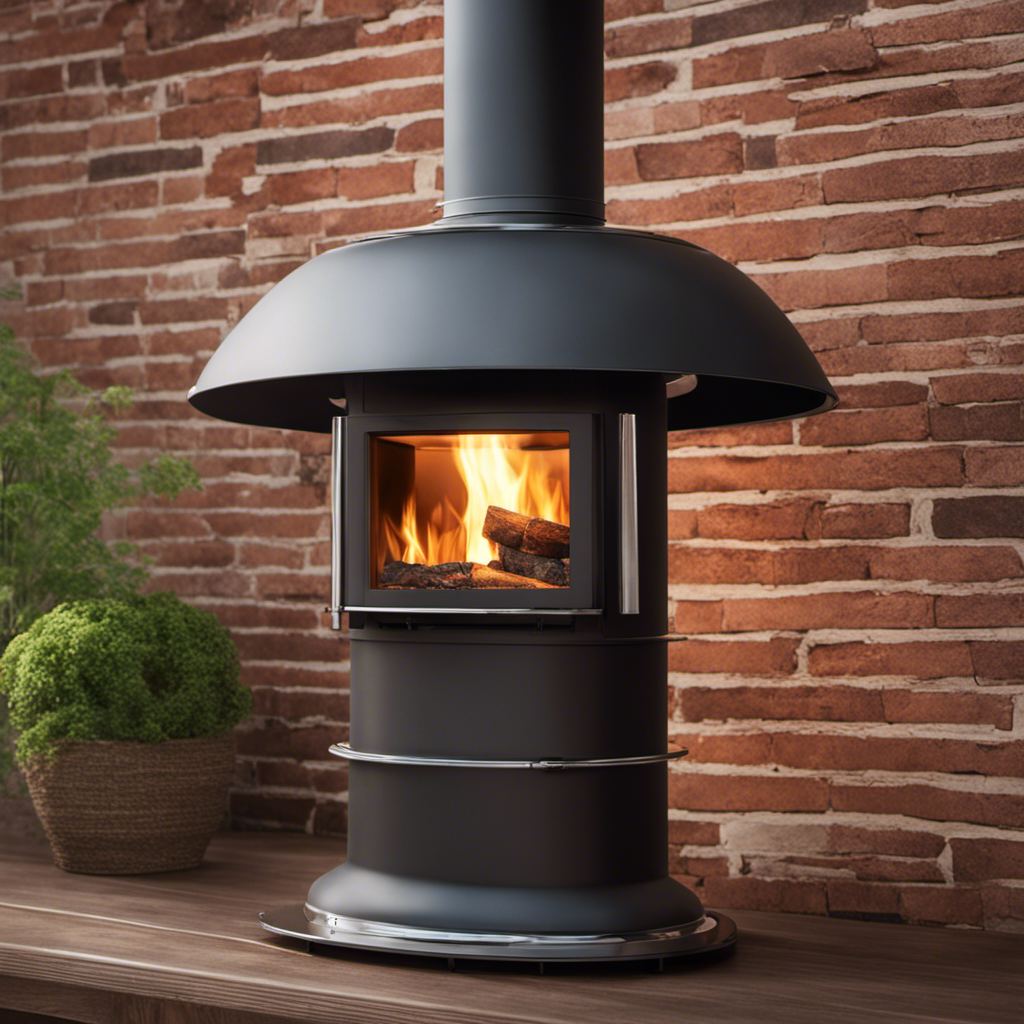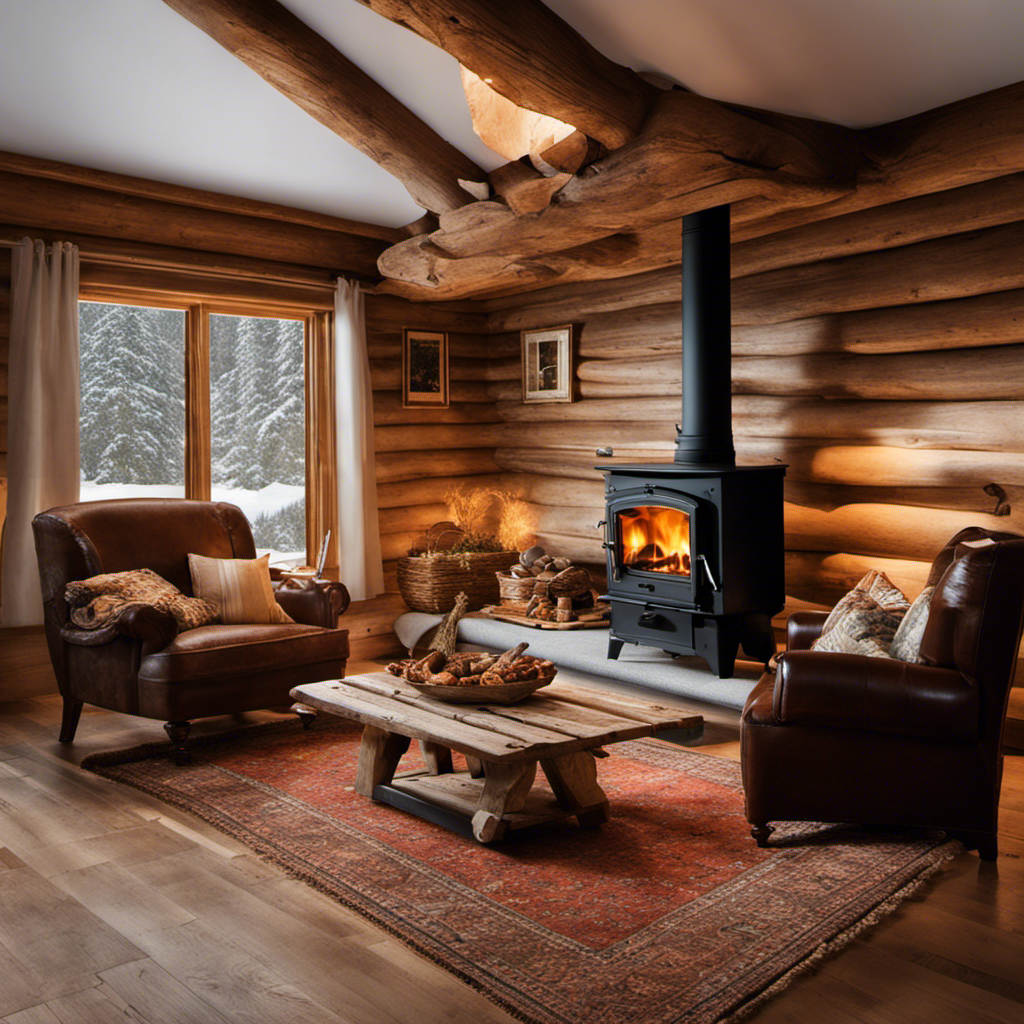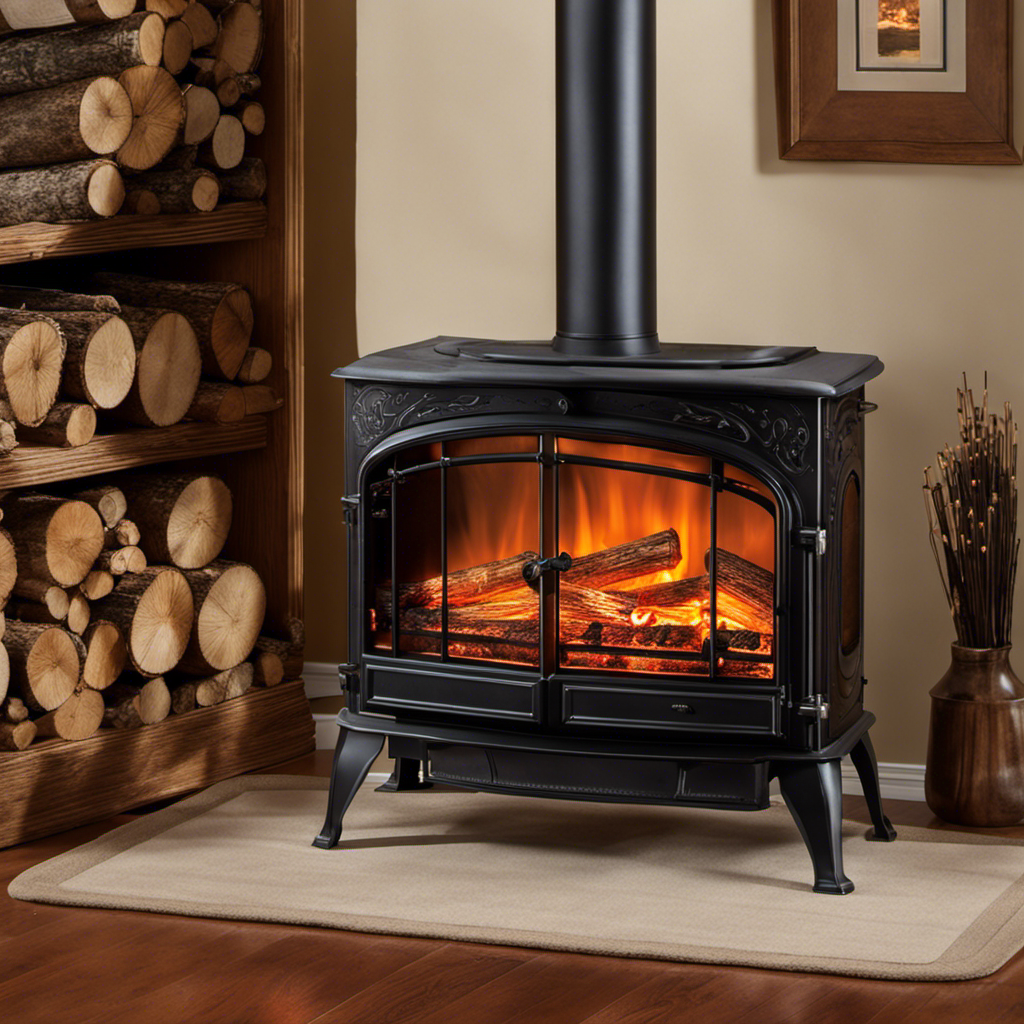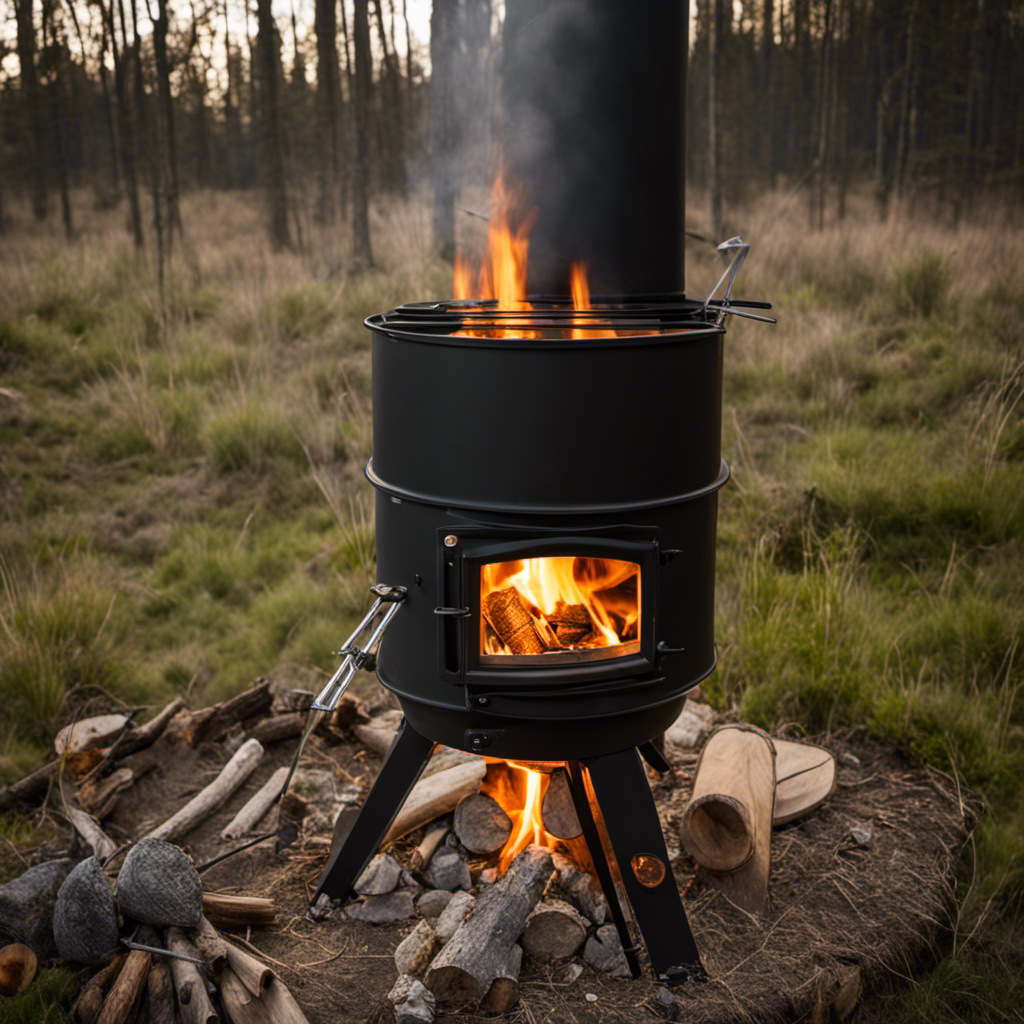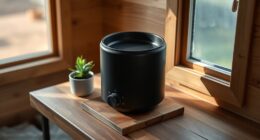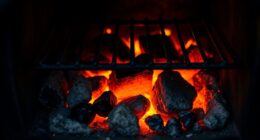Each year, did you know that there are over 25,000 chimney fires in the United States? This stresses the importance of making sure your wood stove chimney is properly maintained.
In this article, I’ll share my expertise on how to keep your chimney safe and secure. From inspecting and choosing the right chimney cap to securing the liner and proper insulation, I’ll provide you with all the essential steps for maintaining a secure wood stove chimney.
Plus, I’ll share maintenance and cleaning tips to ensure its longevity.
Key Takeaways
- Securing the chimney liner using stainless steel screws ensures stability and proper functioning of the chimney system.
- Regular inspections and cleanings are necessary to maintain the integrity of the chimney liner and extend its lifespan.
- Properly insulating the chimney with materials such as ceramic fiber insulation or mineral wool insulation helps maintain efficiency and prevent heat loss.
- Regular maintenance and cleaning, including checking for obstructions, creosote buildup, and structural issues, are essential for wood stove chimney safety.
The Importance of Chimney Inspection
I really should get my chimney inspected to ensure it’s functioning properly and safely. Common chimney inspection issues can arise from a variety of factors, including weather damage, poor maintenance, and age-related wear and tear.
Signs of chimney damage to look out for include cracks or gaps in the masonry, loose bricks or mortar, and a buildup of soot or creosote. These issues can lead to serious problems, such as chimney fires, carbon monoxide leaks, and structural damage to your home. It’s crucial to address these issues promptly to prevent further damage and ensure the safety of your household.
Choosing the Right Chimney Cap
Finding the perfect chimney cap can enhance the safety and functionality of your chimney, while also preventing potential issues such as animal intrusion or water damage.
When it comes to chimney cap materials, there are various options to consider. Stainless steel is a popular choice due to its durability and resistance to rust. Another option is copper, which not only provides excellent protection but also adds an aesthetic appeal to your chimney.
As for chimney cap installation, it’s important to ensure a proper fit and secure attachment. This can be done by hiring a professional chimney technician who’s the expertise and knowledge to install the cap correctly. They’ll also be able to recommend the best chimney cap materials based on your specific needs and budget.
Securing the Chimney Liner
Usually, professionals secure the chimney liner by using stainless steel screws for added stability. When it comes to chimney liner installation, it’s crucial to ensure that it’s securely fastened to prevent any potential issues in the future. This step is essential as it helps to maintain the integrity of the liner and ensures proper functioning of the chimney system.
Along with the installation, regular chimney liner maintenance is also necessary. This includes inspecting for any signs of damage or wear, cleaning the liner regularly to remove any creosote buildup, and checking for any loose screws or connections. Proper maintenance won’t only extend the lifespan of the chimney liner but also ensure optimal performance.
Now, let’s move on to discussing the importance of properly insulating the chimney.
Properly Insulating the Chimney
The insulation of the chimney plays a crucial role in maintaining its efficiency and preventing heat loss. When it comes to insulating materials, there are a few options available.
One popular choice is ceramic fiber insulation, which is known for its excellent thermal performance and durability. Another option is mineral wool insulation, which provides excellent fire resistance.
The installation process for chimney insulation involves carefully wrapping the chosen insulating material around the chimney, ensuring that there are no gaps or overlaps. It’s important to follow the manufacturer’s instructions and guidelines for proper installation.
Once the insulation is in place, it’s essential to regularly maintain and clean the chimney to ensure optimal performance. Regular inspections, removal of any debris or blockages, and professional chimney cleanings are all important steps in keeping the chimney in good working order.
Regular Maintenance and Cleaning Tips
To keep my wood stove chimney functioning properly, I make sure to schedule regular inspections and cleanings. Wood stove safety is of utmost importance to prevent chimney fires. Regular maintenance and cleaning not only ensure the efficiency of the wood stove but also reduce the risk of fire hazards. During inspections, professionals check for any obstructions, creosote buildup, or structural issues that may pose a safety threat. Cleaning involves removing creosote, a highly flammable substance that accumulates inside the chimney. This is where the 2 column and 3 row table comes in:
| Maintenance Tips | Cleaning Tips |
|---|---|
| Schedule annual inspections | Use a chimney brush for creosote removal |
| Look for any signs of damage | Consider professional chimney sweep services |
| Keep the area around the stove clear | Regularly check the chimney cap and spark arrestor |
Frequently Asked Questions
How Often Should I Have My Wood Stove Chimney Inspected?
I have my wood stove chimney inspected once a year to ensure it’s clean and safe. Signs of a chimney leak include water stains, musty odors, and deteriorating masonry.
Can I Use Any Type of Chimney Cap for My Wood Stove Chimney?
Yes, you can use different types of chimney caps for your wood stove chimney. It’s important to choose one that is specifically designed for wood stoves and to regularly maintain it to ensure proper functionality and safety.
How Can I Secure the Chimney Liner to Prevent Leaks?
To properly install a chimney liner and prevent leaks, it is crucial to secure it tightly. This ensures that the liner stays in place and maintains a proper seal. Proper chimney insulation is important for safety and efficiency.
What Type of Insulation Should I Use to Properly Insulate My Wood Stove Chimney?
When it comes to insulating my wood stove chimney, I make sure to choose the right insulation options that will keep the heat inside and prevent any leaks. The installation process is crucial for a secure and efficient chimney.
Are There Any Specific Cleaning Tools or Products I Should Use for Regular Maintenance of My Wood Stove Chimney?
For regular maintenance of my wood stove chimney, I use a chimney brush and a chimney cleaning solution. These cleaning tools and products help remove creosote buildup and ensure proper airflow, keeping my chimney secure and functioning efficiently.
Conclusion
In conclusion, securing your wood stove chimney is of utmost importance to ensure the safety and efficiency of your heating system.
By inspecting and choosing the right chimney cap, you can prevent potential hazards and keep your home warm.
Securing the chimney liner is another important step in maintaining a safe and efficient wood stove chimney.
Properly insulating the chimney can also contribute to its overall safety and efficiency.
Remember, regular maintenance and cleaning are vital for a well-functioning chimney.
So, take the necessary steps to secure your wood stove chimney and enjoy a cozy and worry-free winter season.
Logan’s affair with adventure began in childhood. He hailed from a small town where vast forests bordered one side and endless shores stretched on the other. His days were spent exploring uncharted woods, climbing tall trees, or listening to the tales of old sailors. This early immersion in a world brimming with stories and mysteries became the foundation of his passion for writing.

